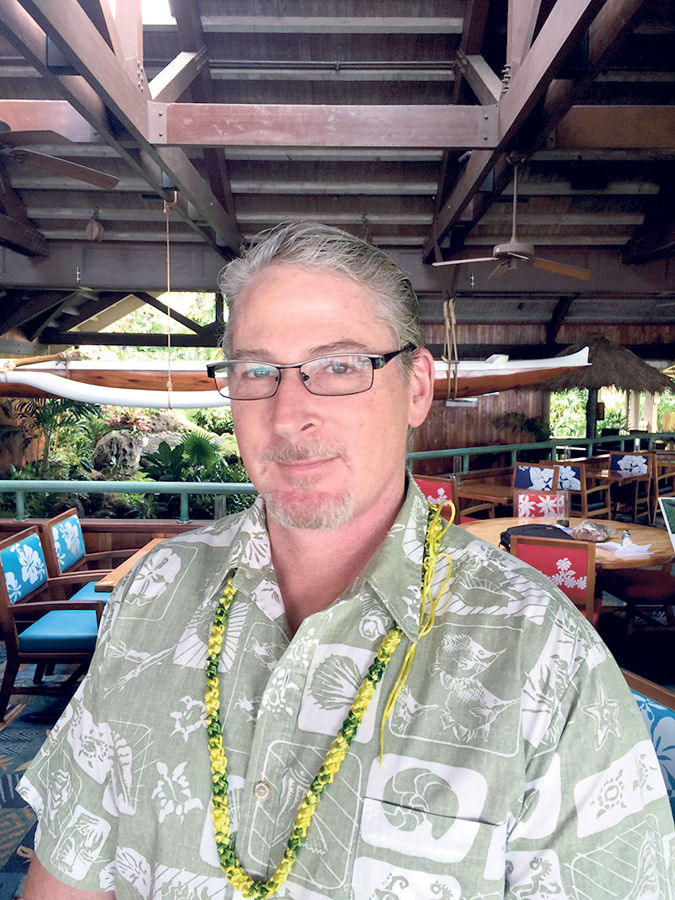As plant manager of the Green Energy Team’s new biomass plant on Kauai, nothing surprises Randolph Singer.
One bit of gossip making the rounds was that “they’re burning shearwaters out there.”
“You think that’s a joke,” he said to the chuckling crowd of about 50 people at the Lihue Business Association meeting Thursday morning. “I hear stuff like that. Rumors get a life of their own.”
Like the one Green Energy would be growing and burning “GMO trees that go from seed to 50-feet tall in eight months.”
“That would be a good thing for us, but no, there’s no such thing,” he said, smiling.
Singer came to the LBA gathering at Duke’s Kauai to provide more details about the $90 million project and dispel any hearsay. In a 30-minute presentation, he outlined plans for the up to 7.5-megawatt facility located near Knudsen Gap that will provide about 12 percent of the island’s electricity — enough to power 8,500 households and replace about 3.7 million gallons of imported oil annually.
“It’s important the public understands what we’re doing out here,” he said. “We want everybody to be comfortable with this and see the benefits it has for Kauai.”
Those include lower costs, sustainable, fixed prices, fixed fuel supply, removing dependence on foreign oil and creating jobs, and he wants to spread the word about the plant expected to go into service next month.
“I want to make a believer out of you,” he said.
Key to the project is that GET has its own supply of albizia trees. About 75 percent of the wood will come from its plantations — it has 3,500 acres secured and plans to rotate for growing and cutting trees to feed the plant. It has licenses, leases and farming agreements on several thousand acres of private and public land. Most of the lands it is using are overgrown with albizia, Singer said. Once they have been removed, non-invasive hardwoods, mainly eucalyptus, will be planted.
The other 25 percent will come from land near Koloa-owned Hawaiian Mahogany, Inc. under a clearing right agreement.
This is critical because, Singer said, the biggest challenge biomass plants face is having a steady fuel supply.
“That’s a deal breaker in most biomass plants,” he said.
Asked if it might run out of trees, Singer gave an adamant no.
“It’s not going to happen,” he said.
The plant will be what is called a “closed-loop system.” In other words, it is not dependent on off-island, outside companies.
“We own the whole process,” Singer said. “We have our fuel supply secured for the life of the plant.”
Kauai Island Utility Cooperative will buy power from Green Energy under a 20-year contract.
In case of natural disaster, the plant will even be able to be restarted without outside power.
He said its carbon footprint will be almost neutral. Even the ash from burning the trees will be recycled as fertilizer for more trees that will be grown as fuel.
“In some cases that would be waste going in the landfill,” he said.
It will burn about 90,000 gallons of diesel a year to operate its trucks and harvesting equipment, but that’s a “drop in the bucket” for the power it will produce. And that power, by the way, is produced like this: “The chips are burned to heat water inside a boiler and convert it to steam. Under high-pressure, the steam turns a turbine that generates electricity.”
The entire plant can be run by two people. Everything, he said, is automated and monitored. But it will still provide 39 full-time jobs with benefits and has hired locals. In fact, Singer said, he is the only person hired who came from off-island.
Kauai was chosen for the plant, which is owned by local, German and Belgian investors, because of its climate and resources, Singer said.
“Let’s face it, Kauai has been biomass powered for a century,” he said. “All the sugar mills had their own power plants. It’s the same thing, except you will never see brown or black smoke belching out of our power plant.”
In fact, Singer said, there will be no visible emission.
“That’s the way we intend to keep it,” he said. “It’s very clean. You will not see it. You will not smell it.”
Carl Berg asked if the plant could eventually take in other product, such as mangrove.
Singer said it is only licensed for albizia and eucalyptus trees. But once the system has been proven to work as expected, it will likely accept other tree species, perhaps even yard waste.
He is convinced as people learn more about the biomass plant, how it operates and its benefits, they will see it as a good thing for the island.
“We’re pretty proud of what we’re doing,” he said.




